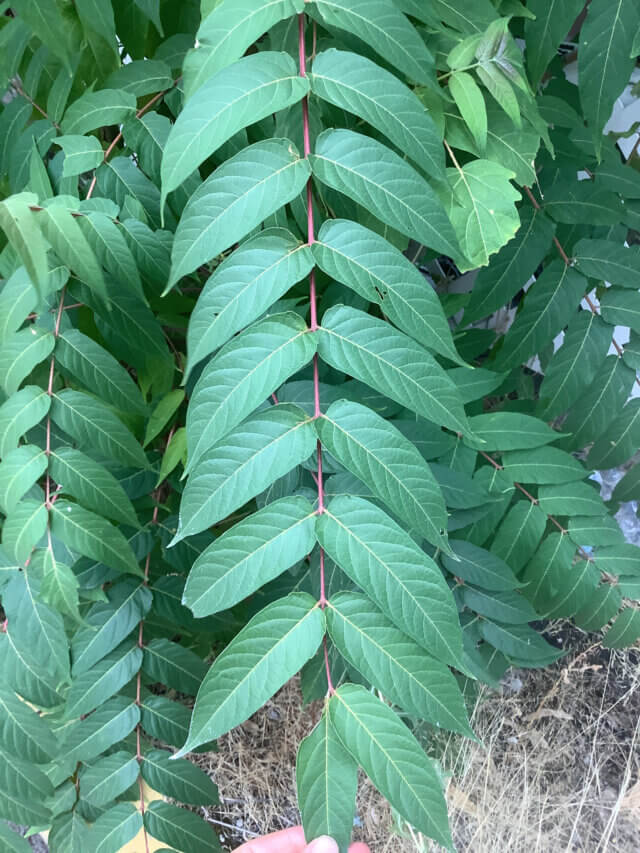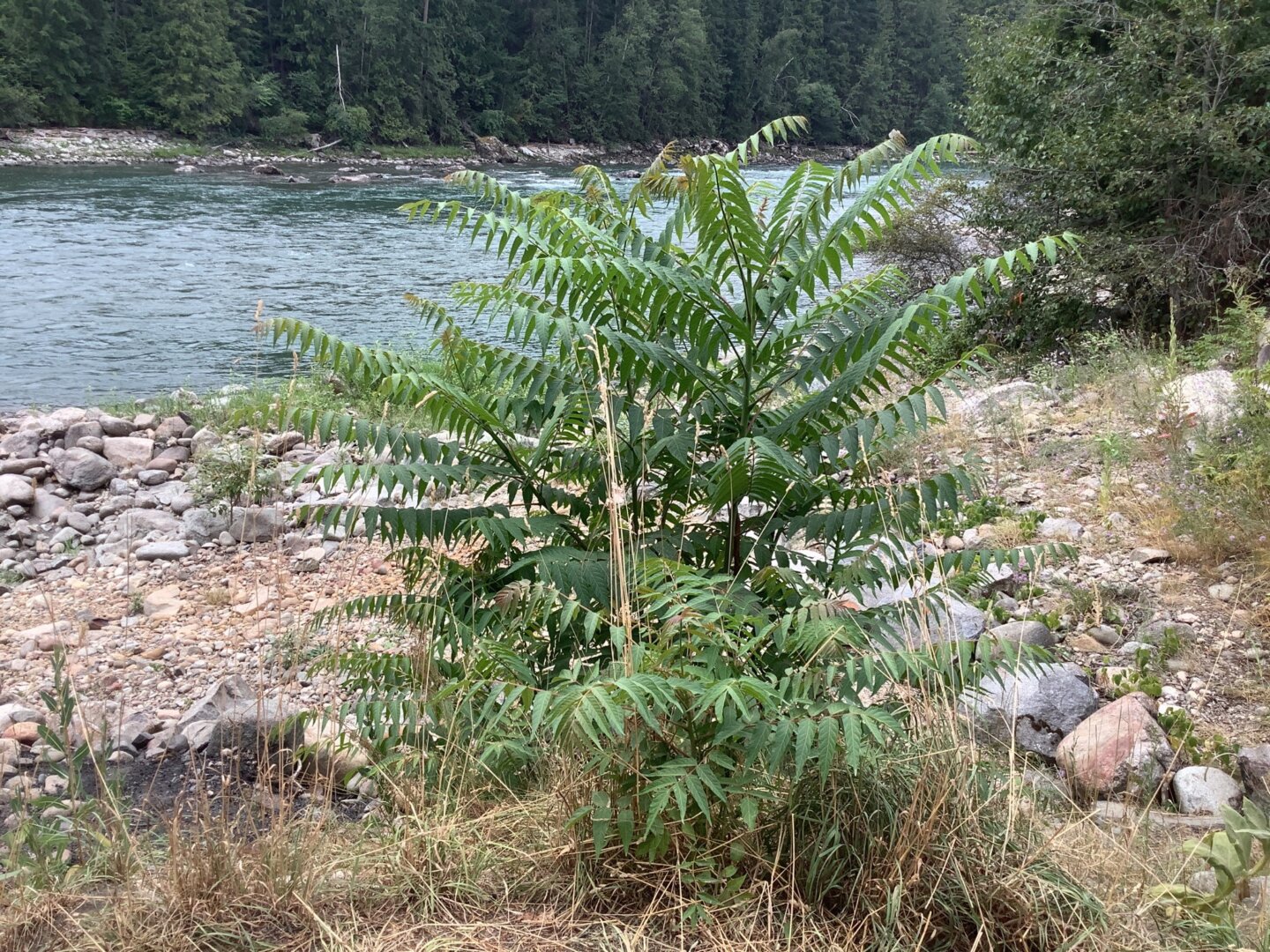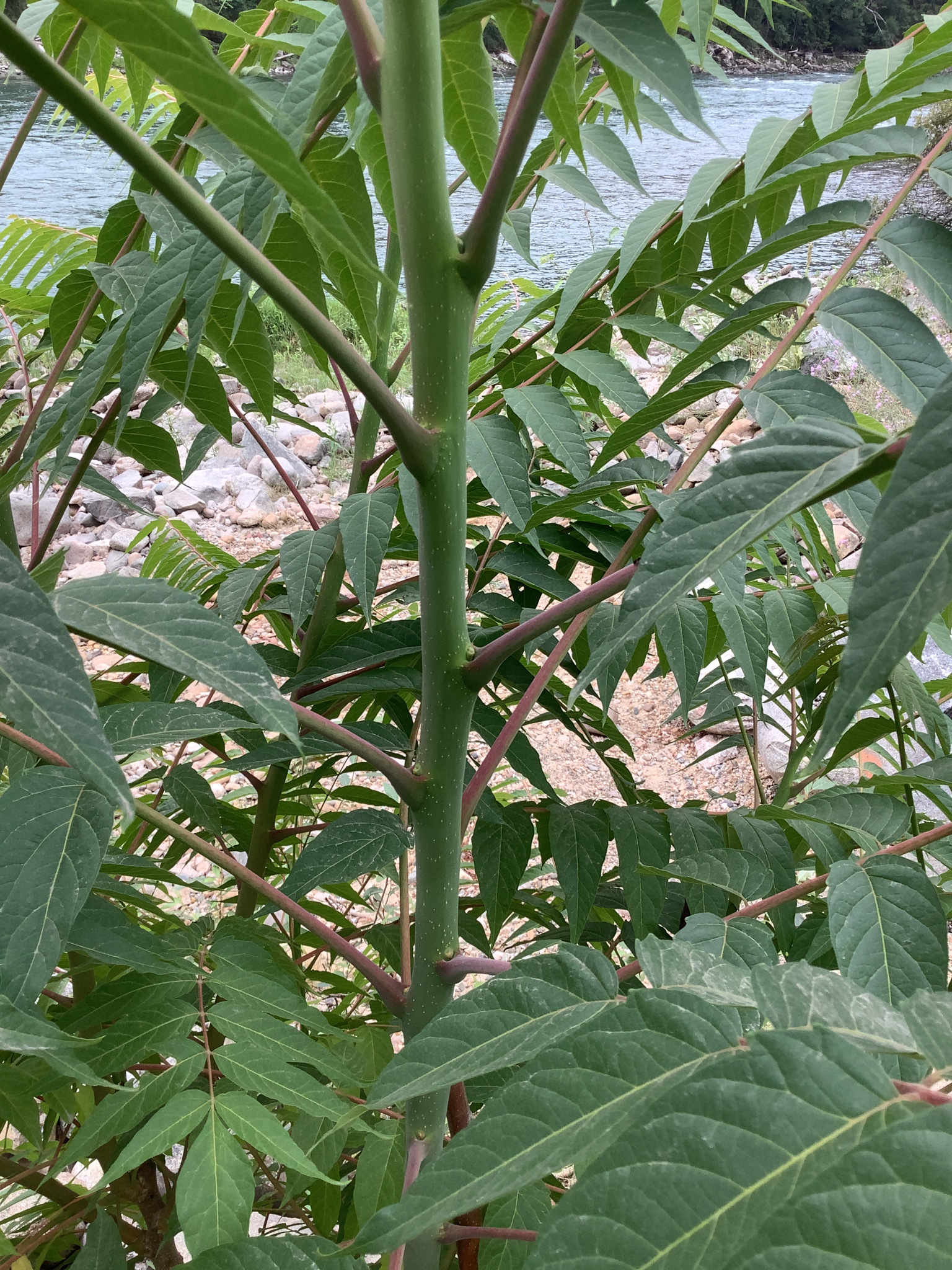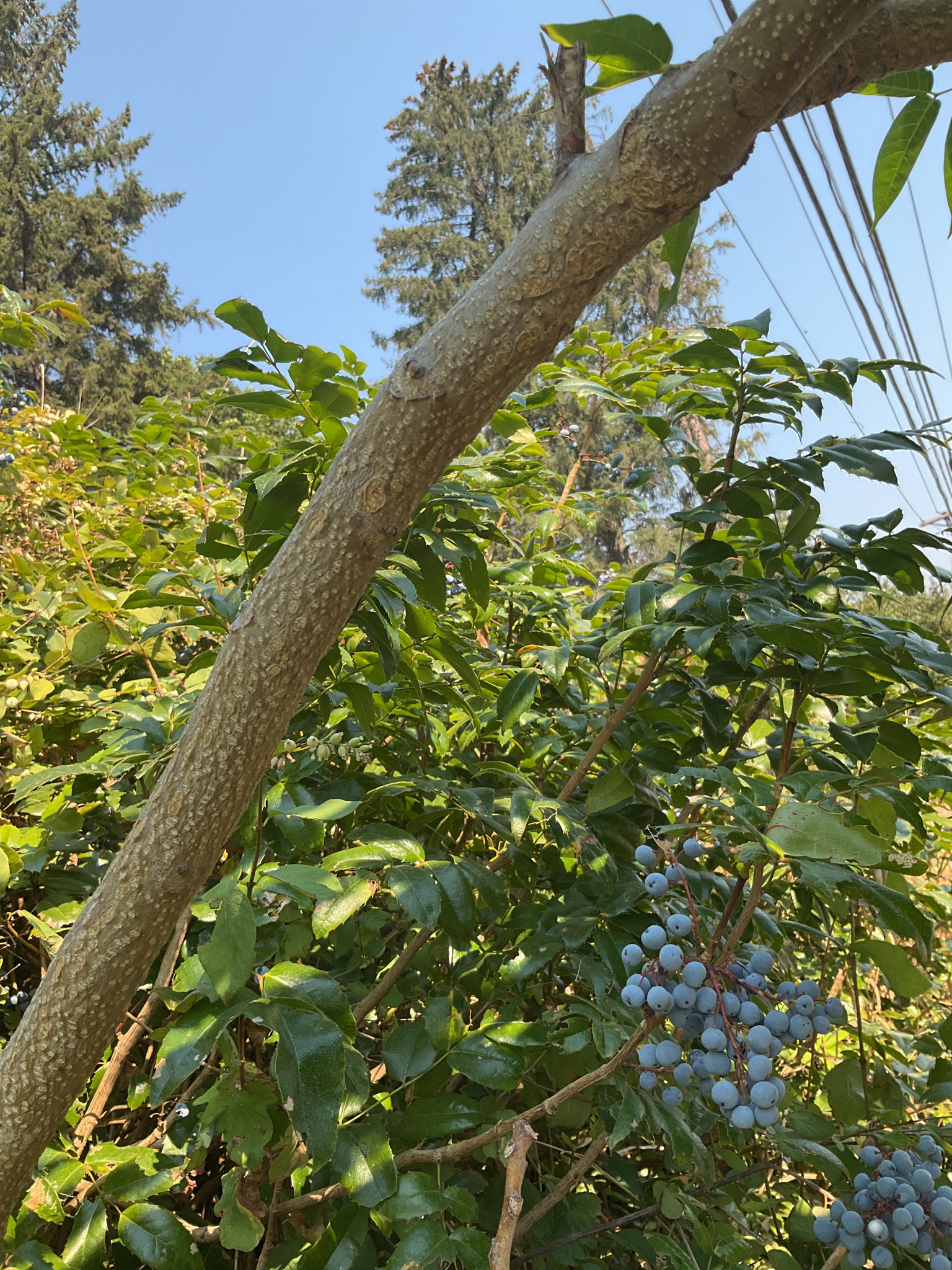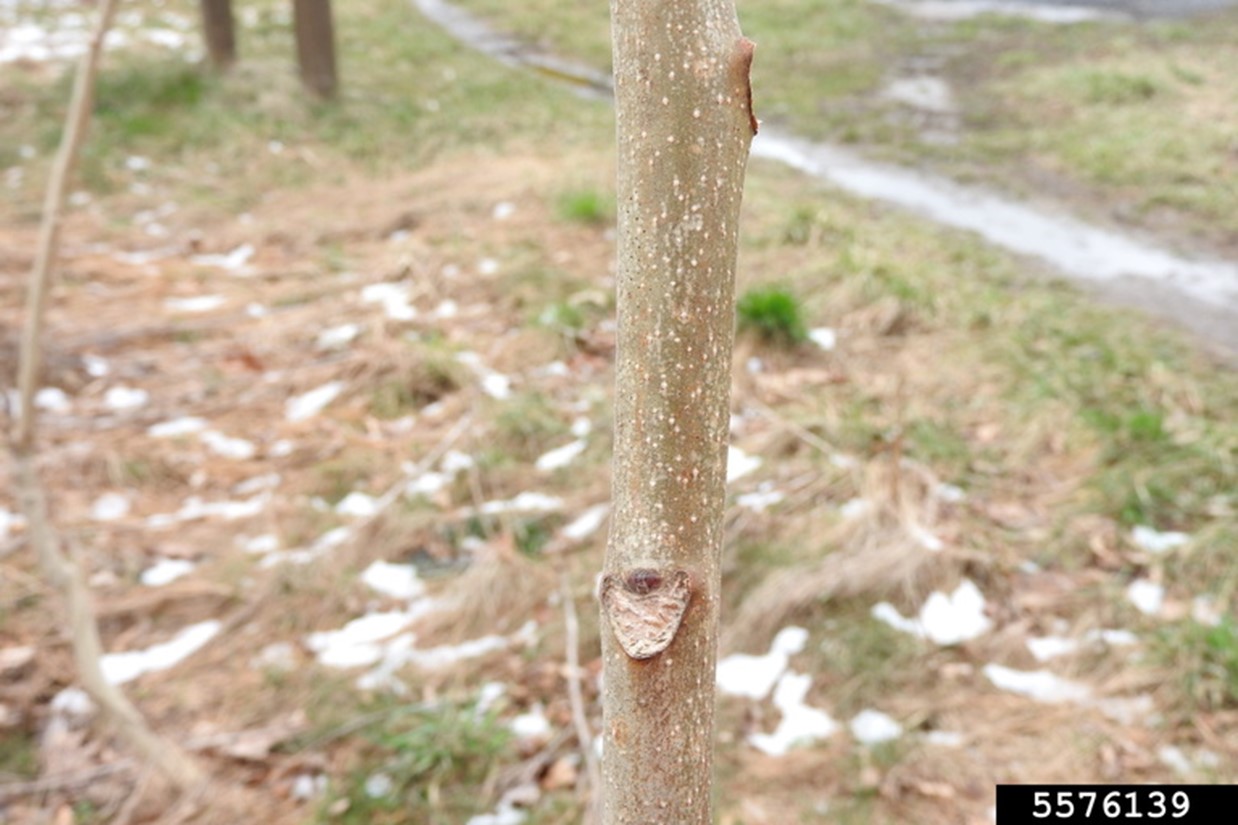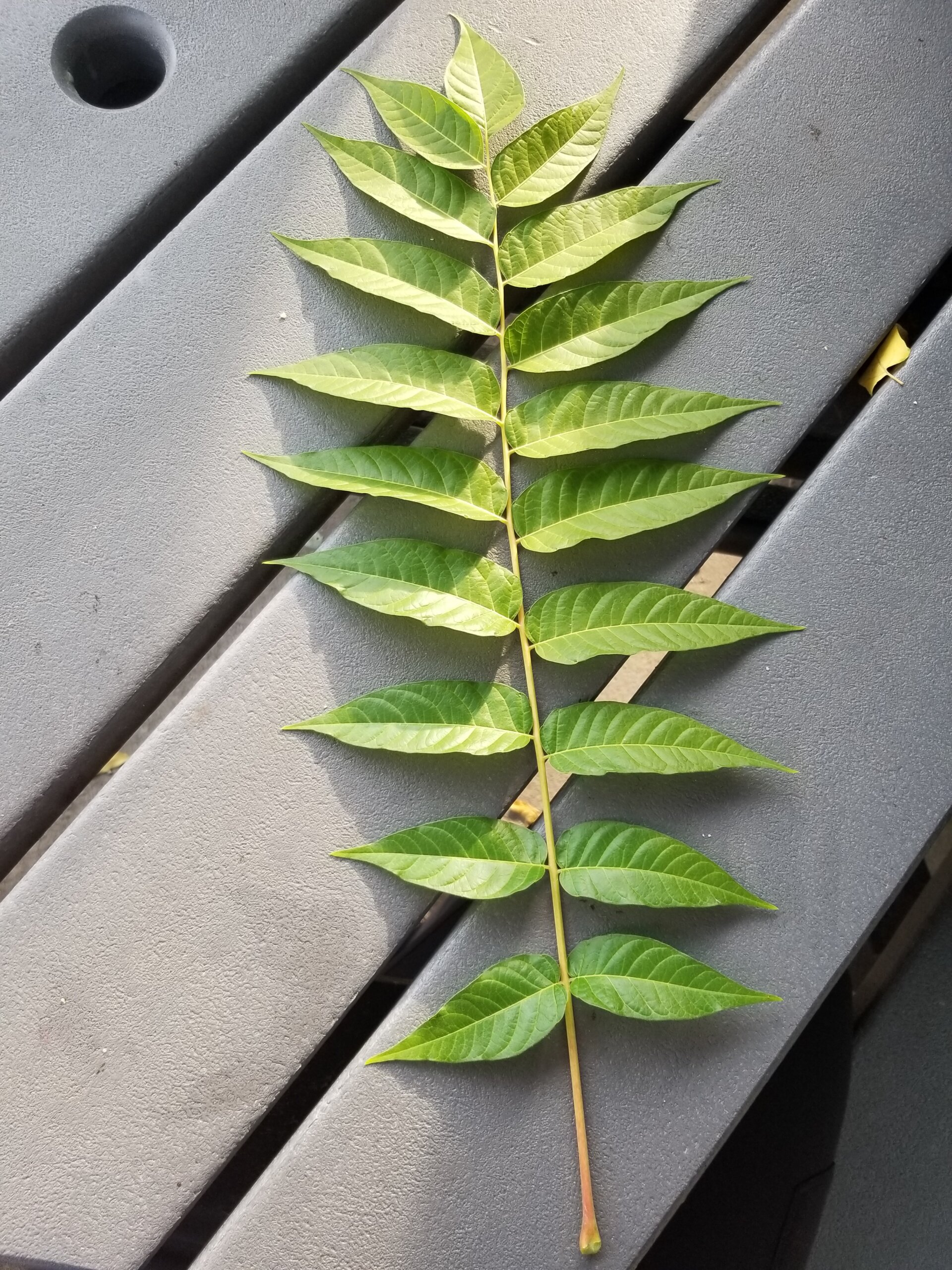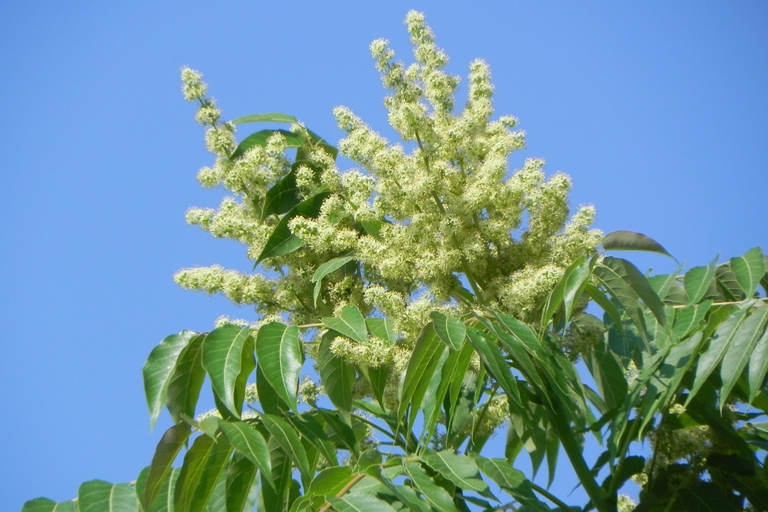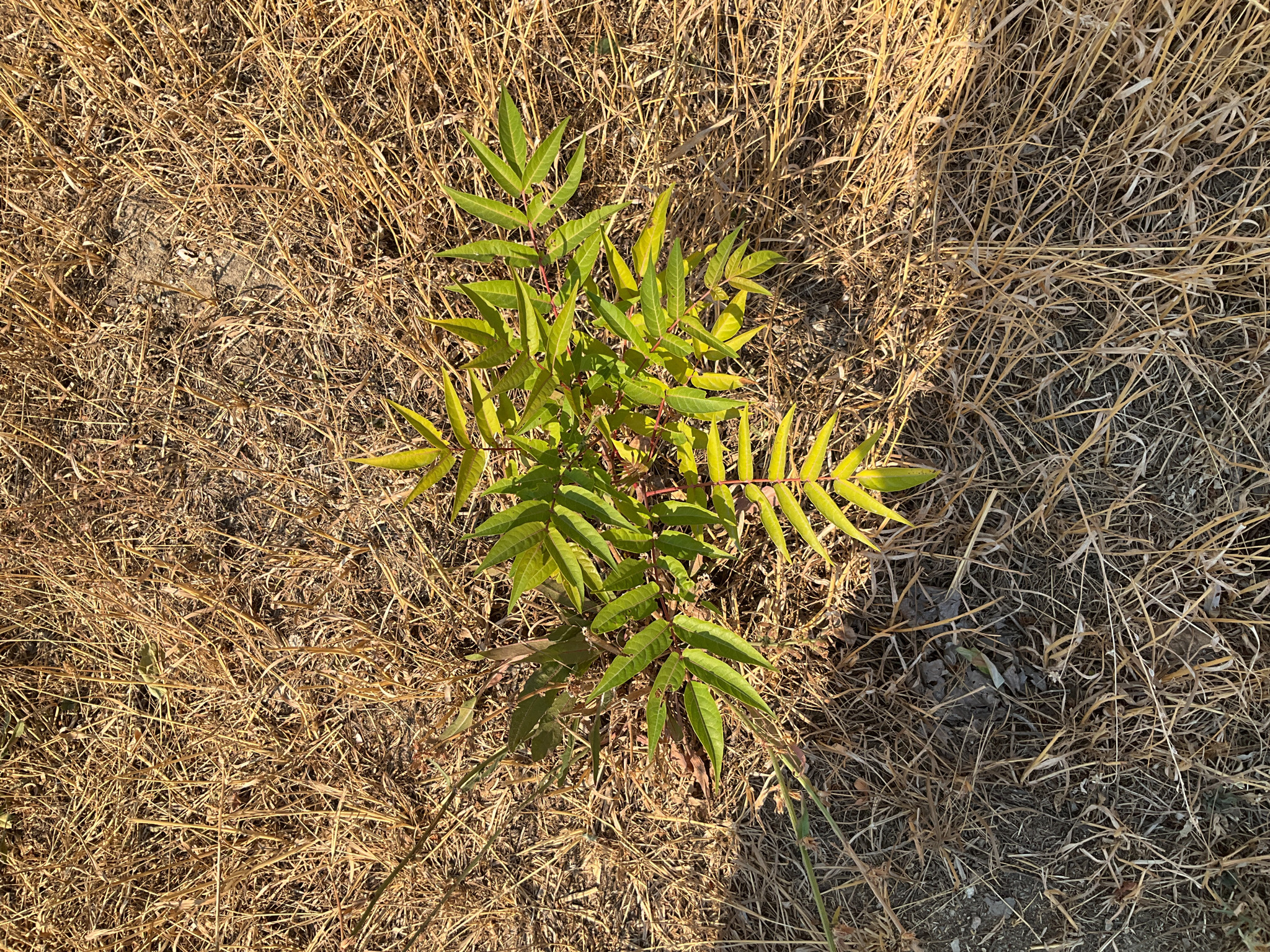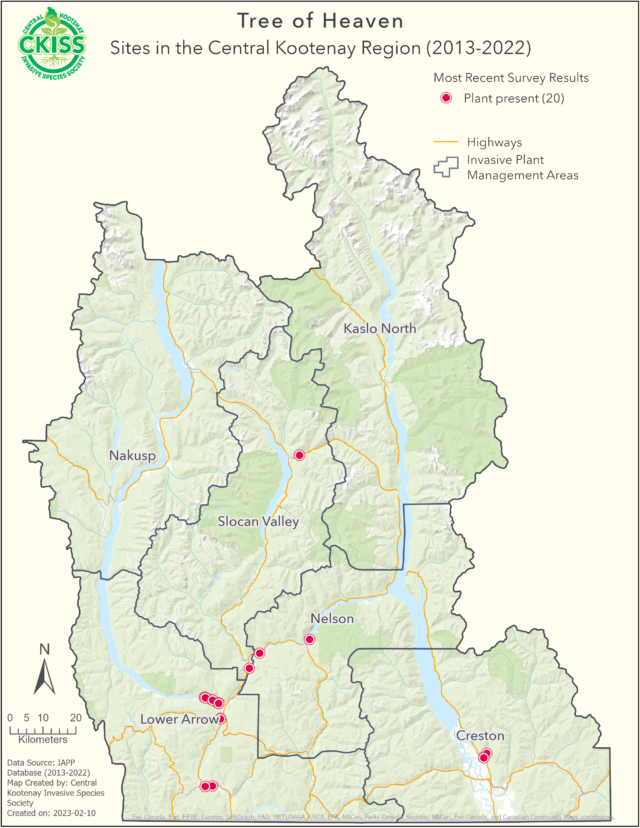Ailanthus altissima
Description
- Deciduous tree that grows up to 30 m tall
- Bark is smooth and brownish-green (young), becoming rougher and brown-grey (mature), resembling the skin of a cantaloupe
- Twigs are smooth, greenish/pink/reddish/brown, and have heart-shaped leaf scars when broken
- Leaves up to 50 cm long, are green (summer) vs. yellow (fall), contain multiple leaflets, and have smooth margins except for two lobes at the base. The lobes have a gland on the underside.
- Nicknamed “stinking sumac” because the leaves release a foul odor when crushed
- Flowers are small, white-greenish, and grow in clusters
- Produces red-brown clusters of pod-like samaras containing one seed each
Introduction and spread
- Native to China and Taiwan
- Introduced to North America for ornamental purposes
- Believed to have the most rapid growth of any tree (native/non-native) in North America
- Resistant to drought and tolerates various conditions, including nutrient poor soils and pollution
- Resistant to predation from herbivores and pathogenic diseases
- Reproduces by seed and vegetatively
- Can produce 300,000+ seeds per year and has a high germination rate
Consequences of invasion
- Invades forest openings and edges, corridors, roadsides, and riverbanks
- It is the preferred host of spotted lanternfly (Lycorma delicatula), an invasive insect that severely threatens the agricultural (particularly fruit) and forestry industries
- Displaces native vegetation by outcompeting plants for resources and releasing toxic chemicals into the soil
- Thrives in full sunlight, impacting early-successional plant communities
- Reduces forage for wildlife
- Impacts infrastructure: its roots can penetrate asphalt, walls, building foundations, and it can enter sewers
- Impacts human health: pollen can cause allergic reactions, sap can cause dermatitis, and it may (very rarely) cause myocarditis if it enters the bloodstream
- Costly and difficult to eradicate

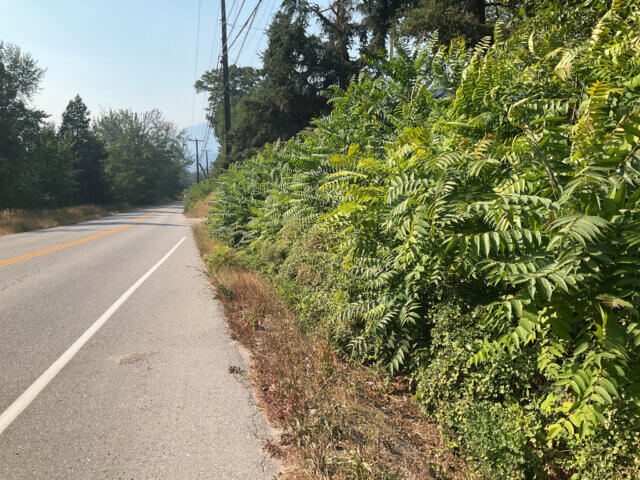
Status in the CKISS region
- Tree of heaven is classified as Eradicate on the CKISS Annual Priority List.
- Tree of heaven occurs in the CKISS region at a very limited distribution, so eradication is the management goal.
- It has not been detected in the Kaslo or Nakusp Invasive Plant Management Areas, where it is classified as Prevent.
- Please report sightings of this species immediately.
- To learn more about how CKISS classifies and manages invasive species, see our Invasive Species Priority Lists page.
Integrated pest management options
Prevention
- Do not plant this species. Learn about Grow Me Instead and PlantWise to grow non-invasive alternatives.
- Do not move contaminated soils to a new area.
- Clean clothing, boots, and gear before entering/leaving an area.
- Monitor tree of heaven for spotted lanternfly and report sightings to CKISS and EDDMaps.
Mechanical control
- Digging/Hand-pulling seedlings can be effective if the entire root system is removed.
- Simply cutting the tree down is ineffective because the tree will re-sprout.
- Ideally, treat with herbicide and wait 30 days for the tree to die before cutting it down.
- Consider seeking a professional to remove tree of heaven from your property.
Chemical control
- Requires persistent treatments because it can re-sprout from stumps and root fragments.
- Applying herbicide to a cut stump will not prevent new growth from the roots.
- Requires ongoing monitoring for regrowth and repeated applications.
- Herbicides with triclopyr or glyphosate can be effective control and can minimize effects on non-target plants.
Additional resources
- Tree of heaven | Invasive Species Council of BC
- Tree of heaven | Invasive Species Centre
- Tree of heaven | Fraser Valley Invasive Species Society
- Tree of heaven | Thompson-Nicola Regional District
- Tree of heaven | Ecological Landscape Alliance
- Spotted lanternfly | Invasive Species Centre
